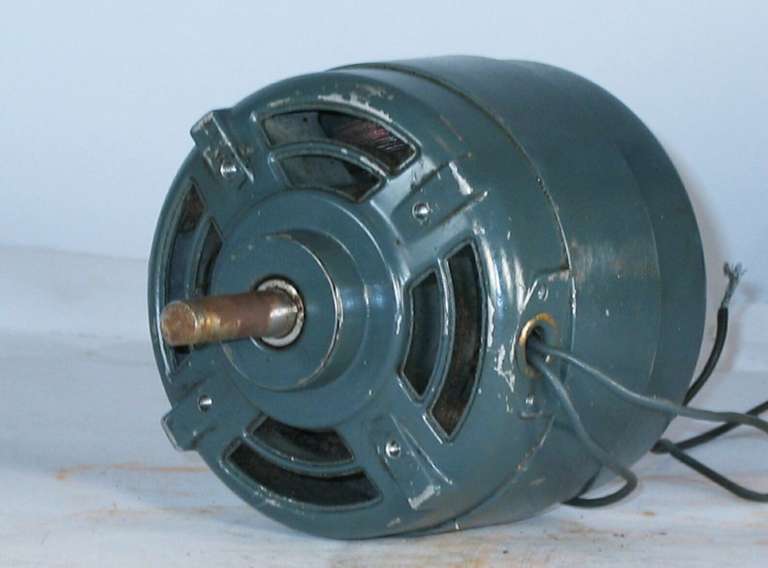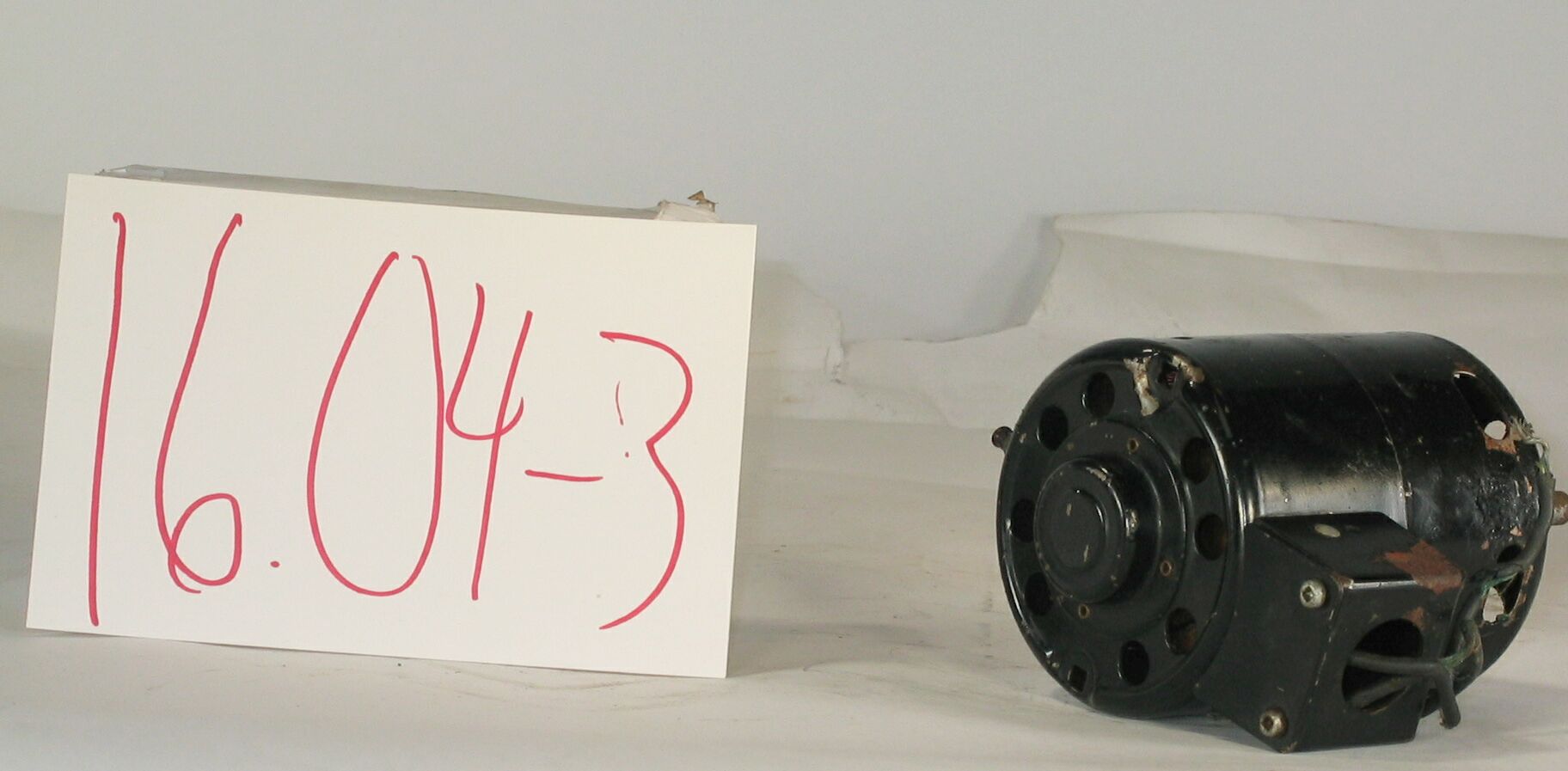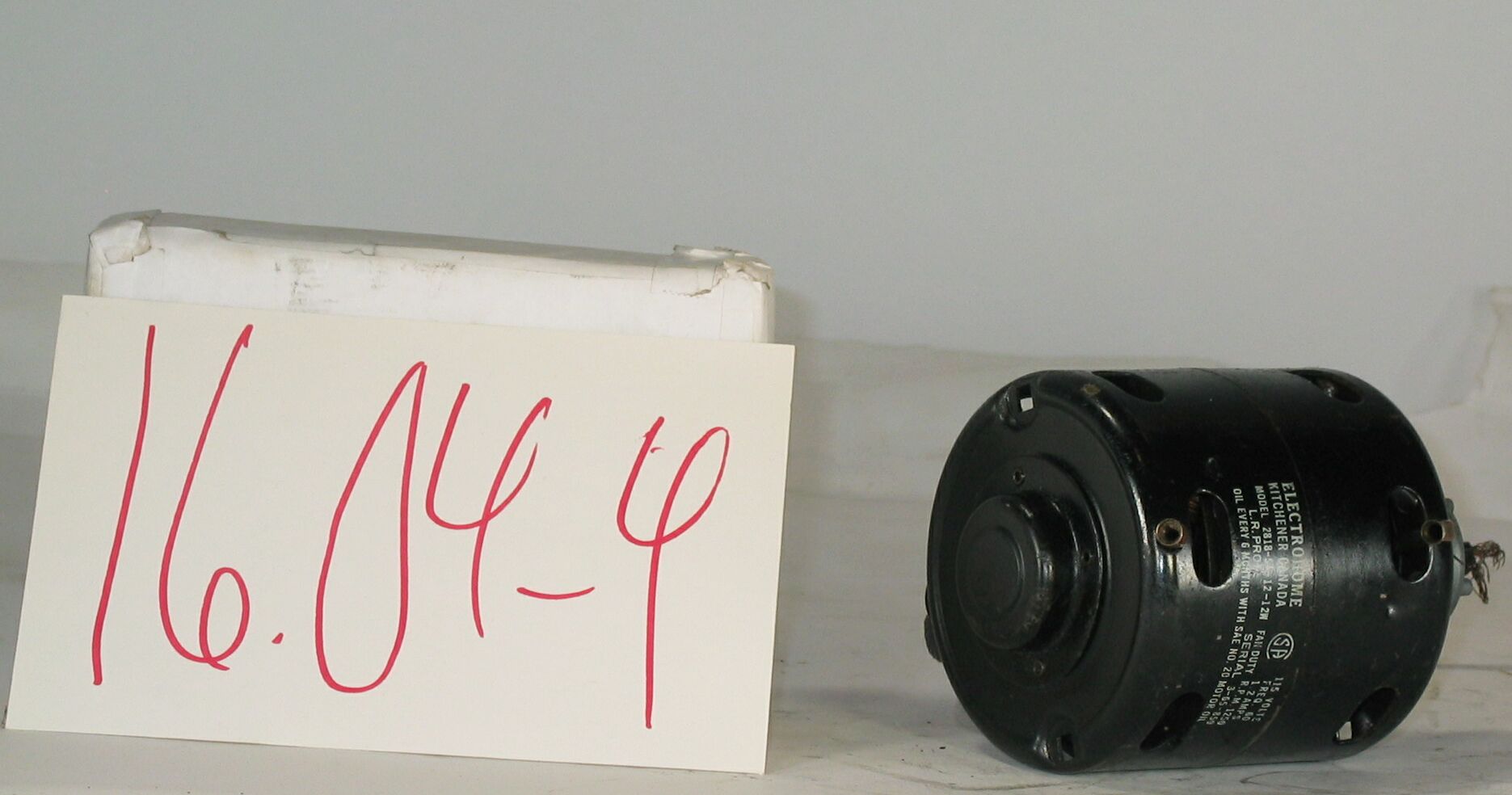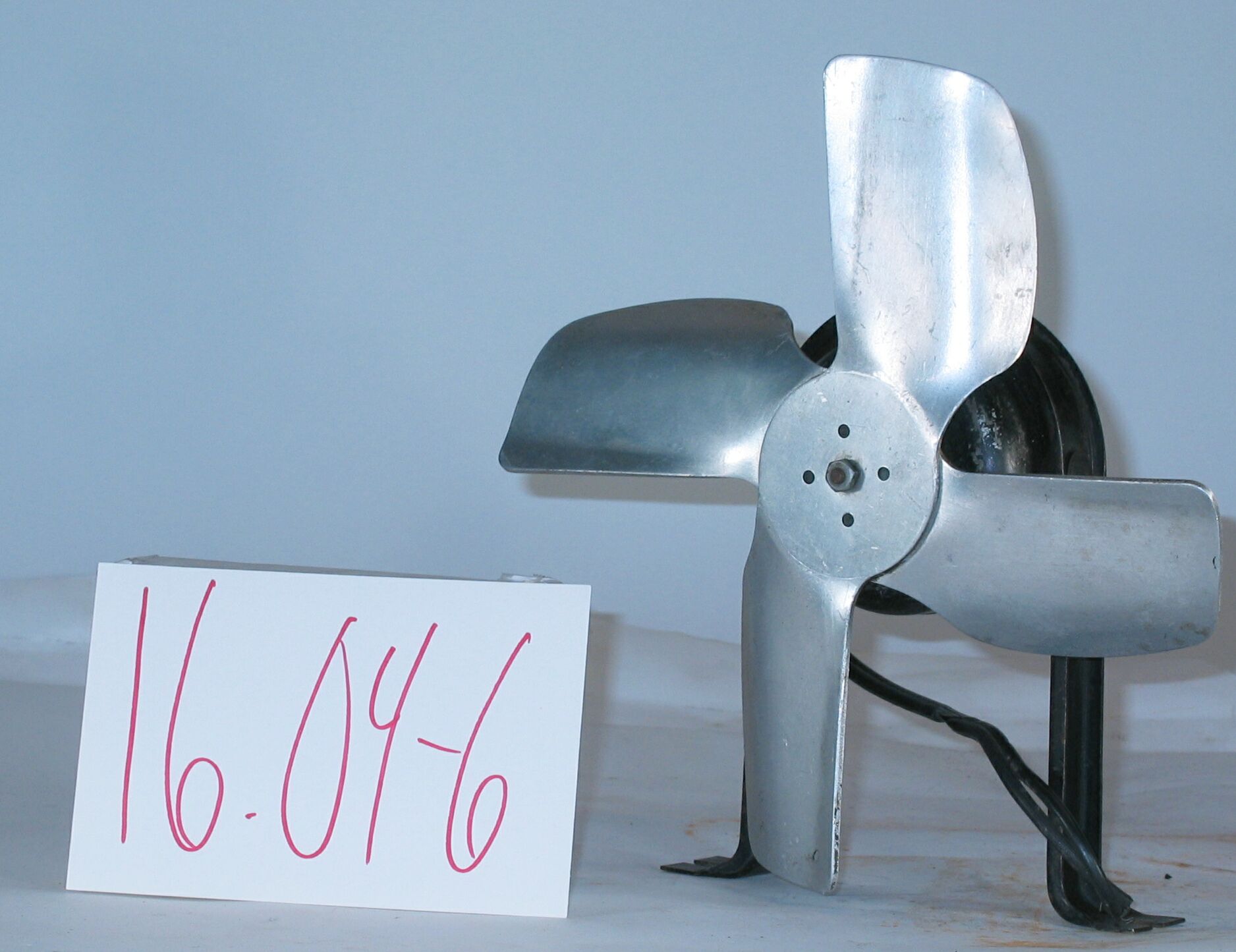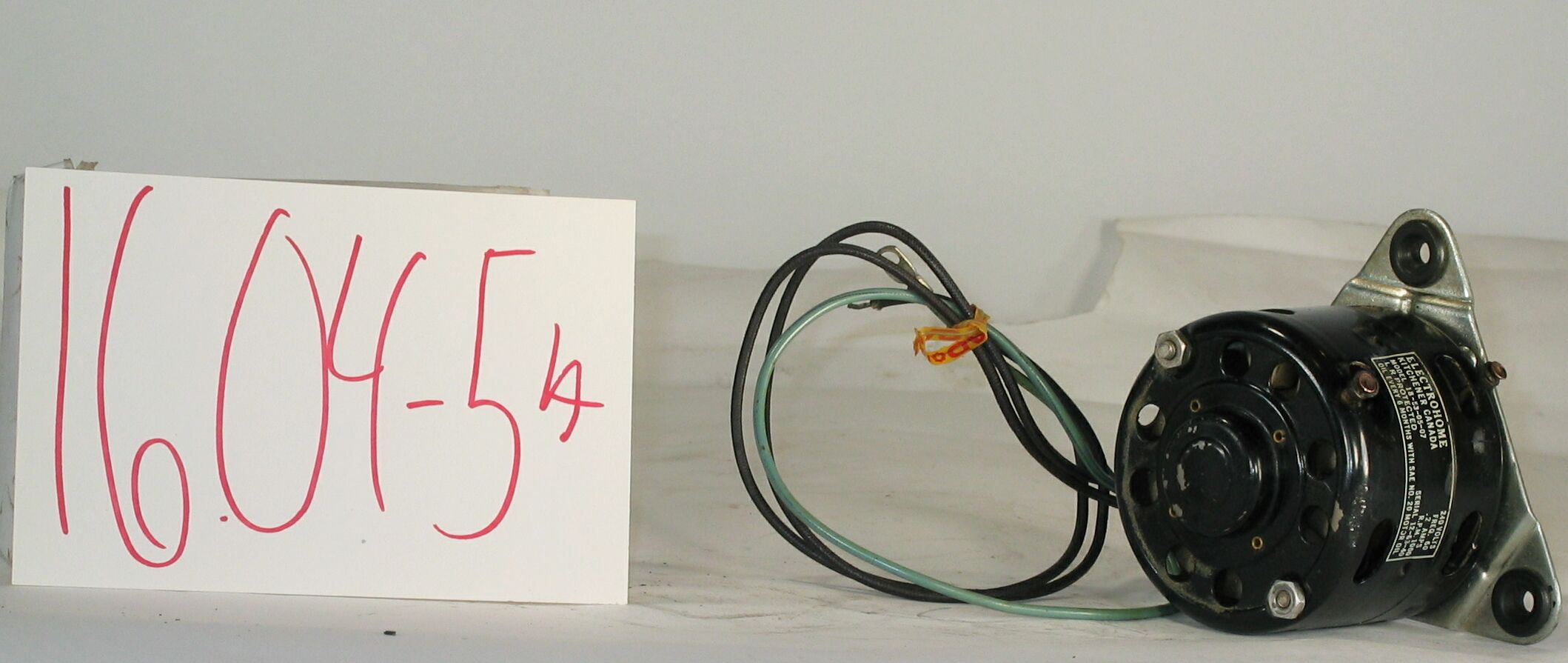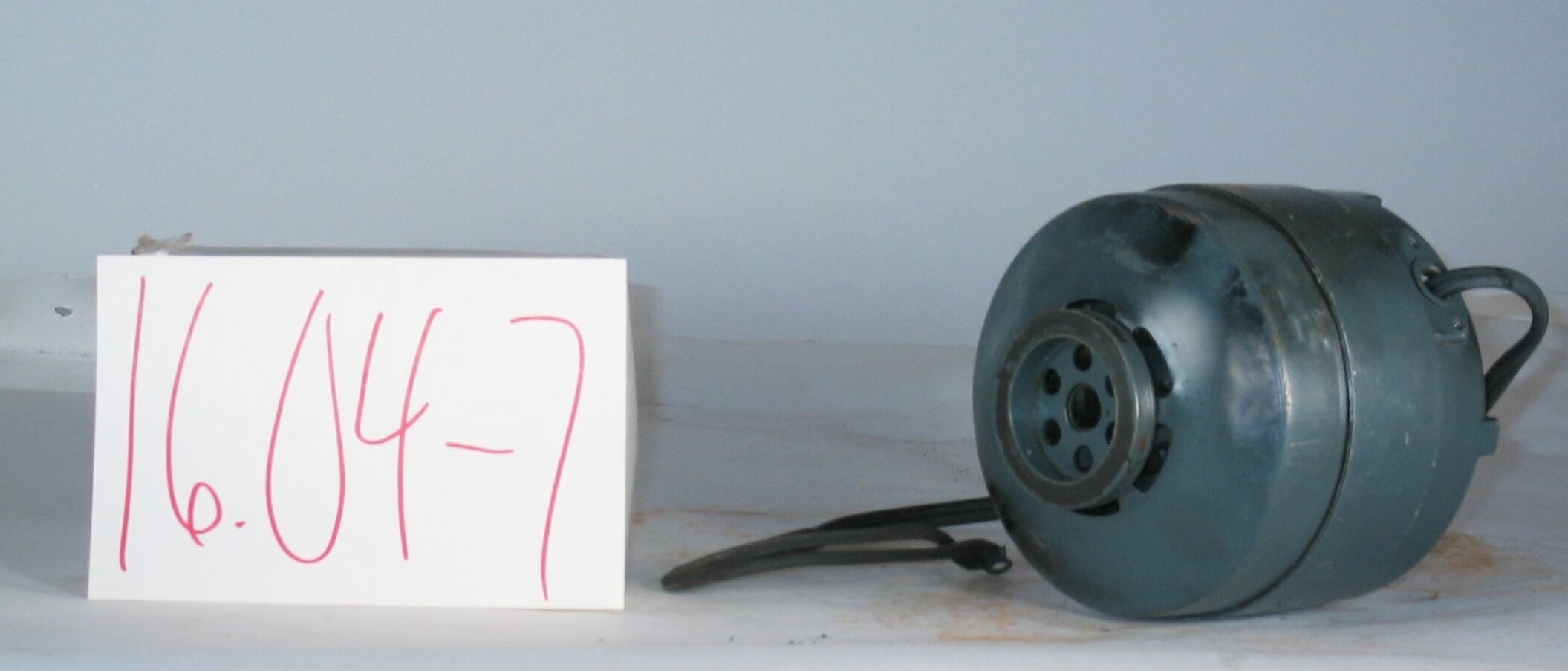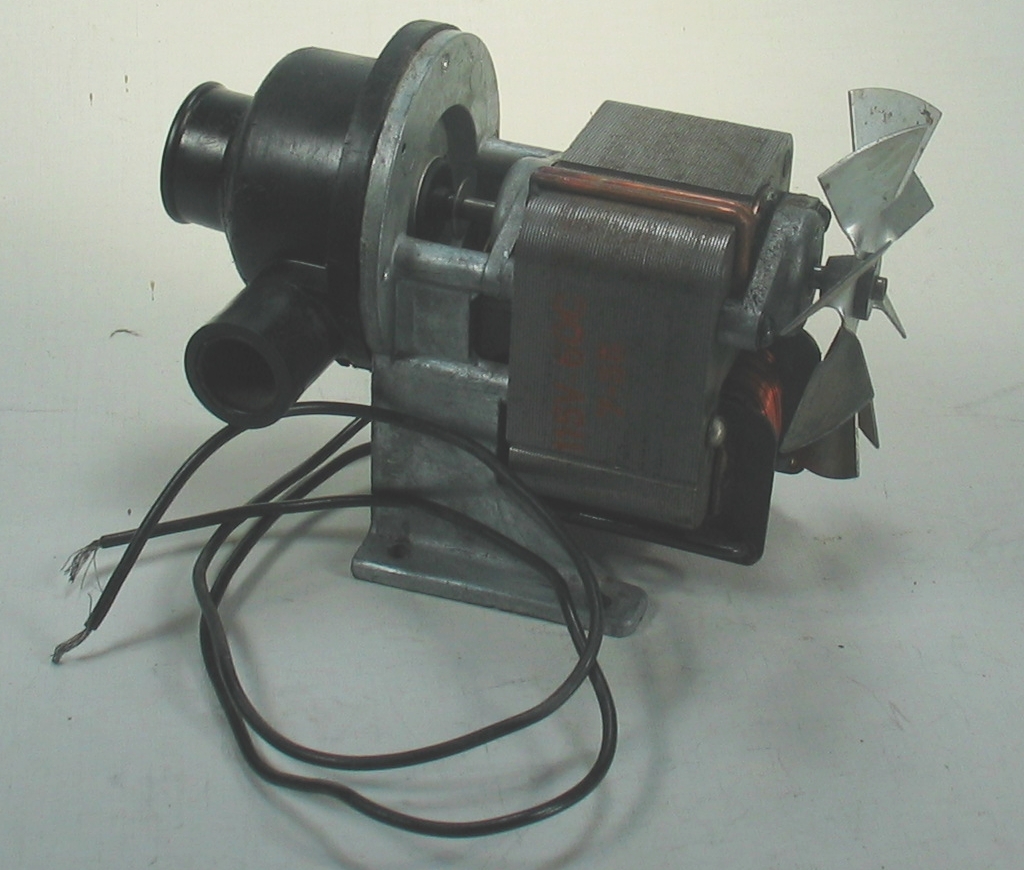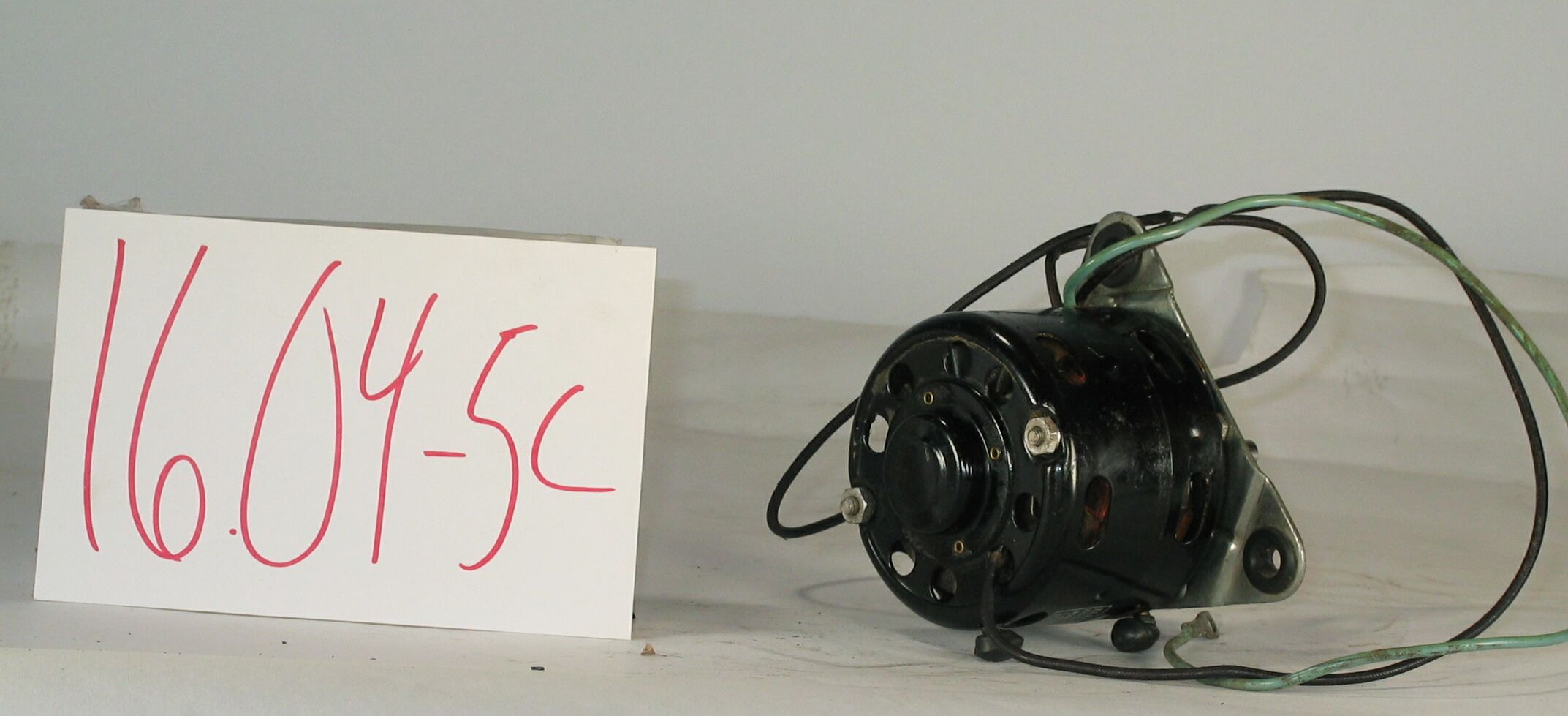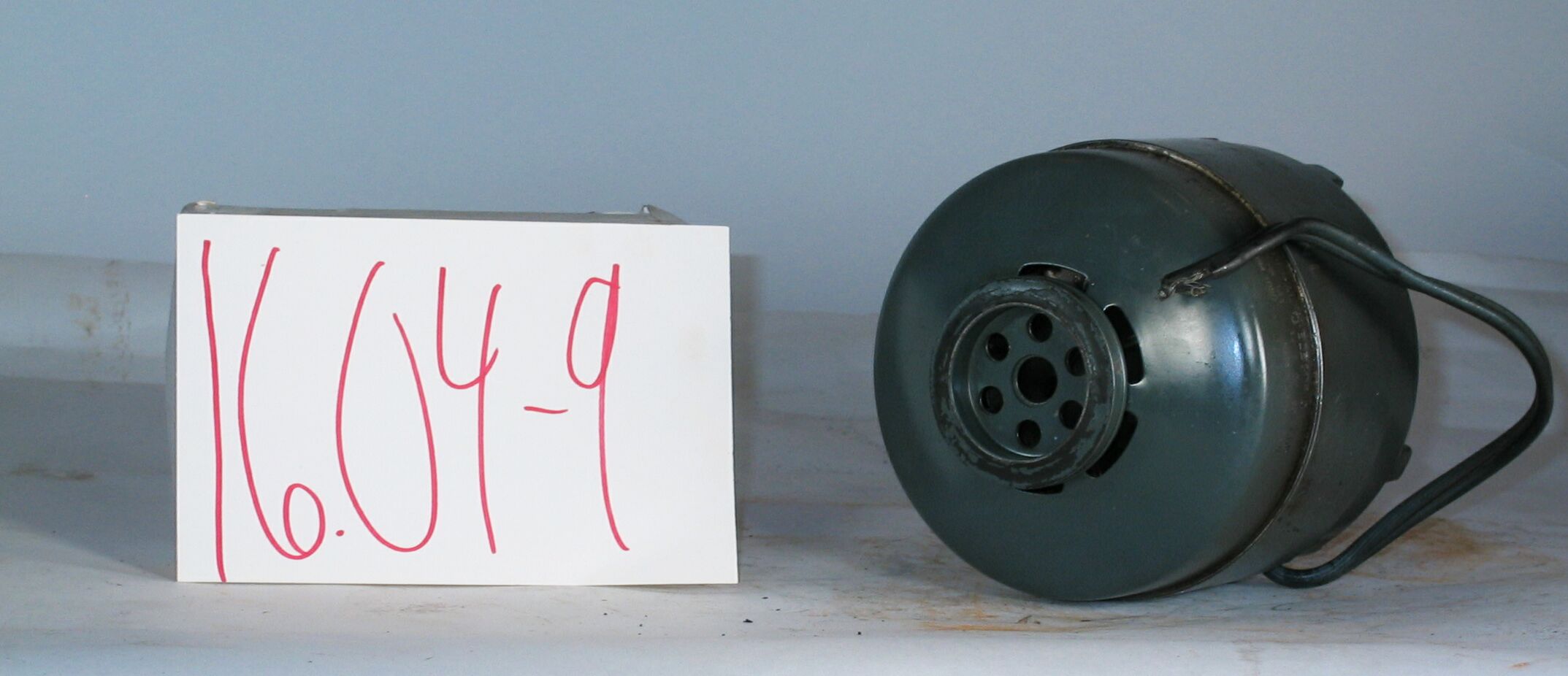16.04-8: GE 1964 Shaded Pole Induction Fan Motor
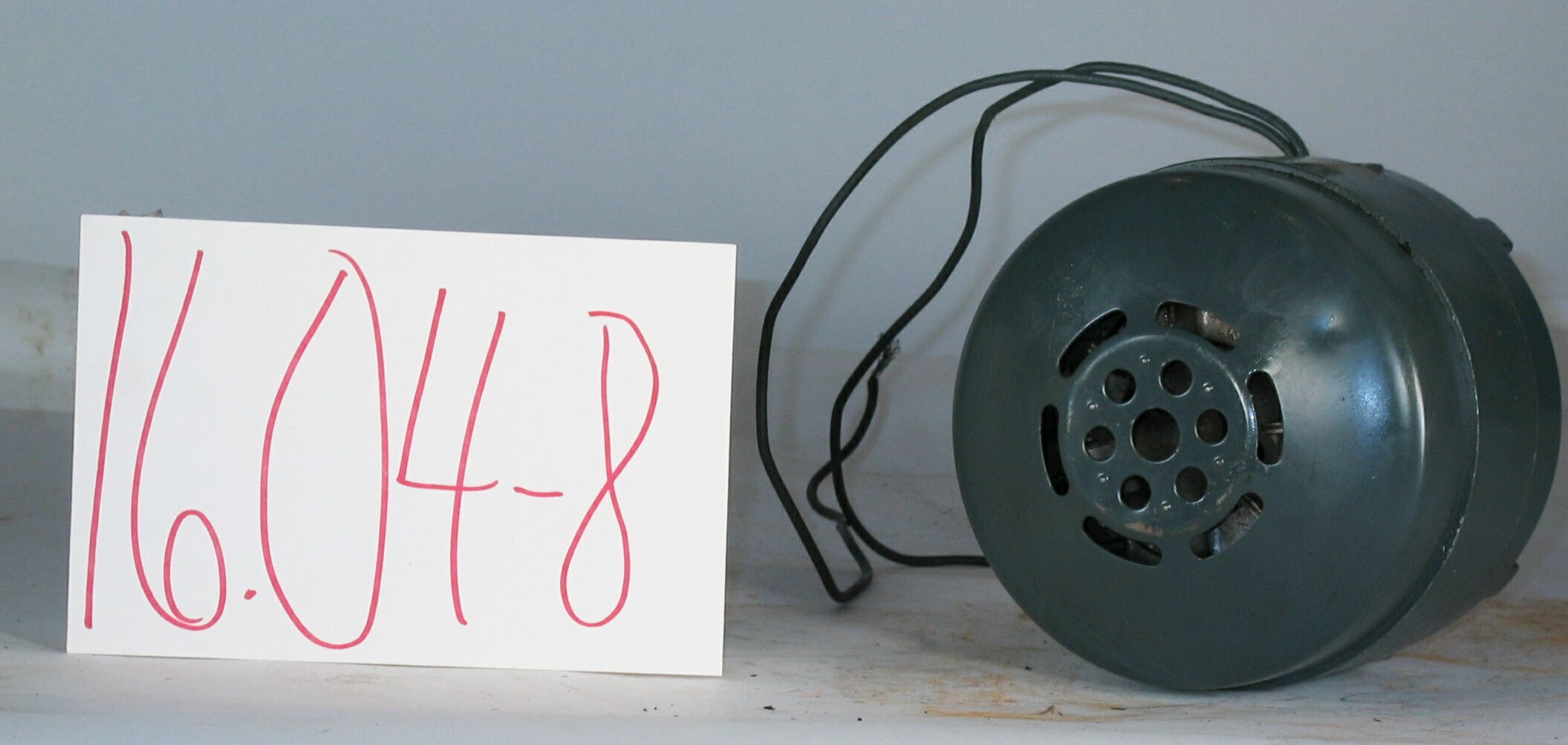
| HHCC Accession No. 2006.196 | HHCC Classification Code: 16.04-8 |
|---|
Description:
A heavy duty, mid 20th century, 60 cycle, 1/20 HP, shaded pole, induction fan motor, custom designed for GE window air conditioner, evaporator and condenser application. Equipped with rubber, torsion 2 point vibration isolating mounting, it helped to make possible a new generation of affordable, larger capacity, quieter more efficient ‘through-the-wall’ [window] air conditioners which changed for ever the expectations of Canadians about what to do about the summer’s heat, GE, Circa 1964 [2 of a set of 3, demonstrating the variations and application of the technology, see also ID#319 and 321].
Group:
16.04 Electric Motors - Single Phase, Shaded Pole and Universal
Make:
GE
Manufacturer:
General Electric, Fort Wayne Ind.
Model:
5KSP21DG941B
Serial No.:
XSU
Size:
7 x 5inch round
Weight:
9 lbs.
Circa:
1964
Rating:
Exhibit, education, and research quality, illustrating the engineering and construction of a mid 20th century, heavy duty, shaded pole, 60 cycle induction motor, custom designed for ‘through-the-wall’, window air conditioners
Patent Date/Number:
Provenance:
From York County (York Region) Ontario, once a rich agricultural hinterlands, attracting early settlement in the last years of the 18th century. Located on the north slopes of the Oak Ridges Moraine, within 20 miles of Toronto, the County would also attract early ex-urban development, to be come a wealthy market place for the emerging household and consumer technologies of the early and mid 20th century.
This artifact was discovered in the 1950’s in the used stock of T. H. Oliver, Refrigeration and Electric Sales and Service, Aurora, Ontario, an early worker in the field of agricultural, industrial and consumer technology.
Type and Design:
Mid 20th century, heavy duty, shaded pole induction motor, engineered for evaporator and condenser application on GE ‘through-the-wall’ [window],air conditioners 110 volts, 60 cycle 1/20 HP, 2.5 amp. Counter clock-wise rotation Sealed bearings
Sealed ferro-magnetic one piece body Rubber, torsion vibration isolating, motor mounts [mounts not included, see ID#319]]
Construction:
Material:
Special Features:
Accessories:
Capacities:
Performance Characteristics:
Operation:
Control and Regulation:
Targeted Market Segment:
Consumer Acceptance:
Merchandising:
Market Price:
Technological Significance:
1 of a set of 3, shaded pole, custom designed motors, demonstrating the variations and application of the technology, in order to fit the specialized requirements of different air conditioner manufacturers, models, and model years, for example in matters of horsepower, starting torque, rotation, inherent automatic thermal protection, etc [see also ID#319 and 321]. Equipped with torsion, rubber vibration mountings, and automatic, recycling, inherent overload protection, It would be representative of an 1960’s, generation of heavy, fan-duty, customized shaded pole motor technology, for the now rapidly maturing through-the-wall [window] air conditioner market. With a totally sealed body and bearings, it was a marker of the now rapidly emerging body of engineering and manufacturing practice, moving to a ‘parts replacement’ culture, from the traditional ‘parts repair’ mode of operation.
The single phase alternating current induction motor has a public face of great simplicity - no commutator, brushes, governor nor switching mechanism to get it started, simply a field winding and solid state [squirrel cage] rotor mounted between two bearings. Its ‘shading pole(s)’ consisting of single turn of wire strategically placed around its pole face(s), is all that is required to start rotation. Yet the shaded pole induction motor is a marvel of early 20th century electrical design engineering. [See Reference No. Chapter XIII, P. 297]
Industrial Significance:
Its low cost and unique speed-torque characteristics made the shaded pole induction motor ideal for small fan applications of 1/20th HP or less. A ‘one-of-a-kind’, ‘just-in-time’ technology, it quickly found a special place in 20th century appliances and electrical equipment, where air circulation, air conditioning and ventilation where imperatives. By the mid 1960’s the through-the-wall [window] air conditioner market was rapidly maturing, providing the Canadian public an affordable solution to spikes in summer heat that her-to-for could not have been imagined. The innovative, unitary engineering concept with cooling and heat rejection equipment all in the same cabinet made it readily installed by the do-it-yourself’s, without special tools and equipment. Air conditioners had become the newest home appliance.
Socio-economic Significance:
Socio-cultural Significance:
The shaded pole induction motor quickly became an integral, often unobtrusive, component part of the appliances and equipment that increasingly invaded the Canadian home and place of business starting in the early 20th century. Typically custom engineered as component part of a larger piece equipment to ensure air circulation and ventilation, the shaded pole induction motor has enabled much and in so doing has change much of life for Canadians, as an essential part of our 20th and 21st century technological experience. Of equal significance is the ‘shaded pole synchronous motor’, which made possible the electric clock and a multitude of automatic time controlled devices throughout the 20th century [see for example Group 12.08 and 12.10 control devices]
Donor:
G. Leslie Oliver, The T. H. Oliver HVACR Collection
HHCC Storage Location:
Tracking:
Bibliographic References:
‘Fractional Horsepower Electric Motors’, Cyril Veinott, McGraw Hill New York, 1948, Chapter XIII, P.297 ‘Rewinding Small Motors’, Daniel Braymer and C.C. Roe, McGraw Hill, 1932 ‘A course in Electrical Engineering, Volume II, Alternating Current’, Chester Dawes, McGraw Hill, 1934, Starting single Phase Induction Motors, P. 362. ‘The Fractional Horsepower Motor and its Impact on Canadian Society and Culture’, G. Leslie Oliver, Material History Review, Vol. 43, Journal National Museum of Science and Technology, 1996.

